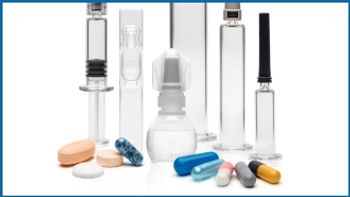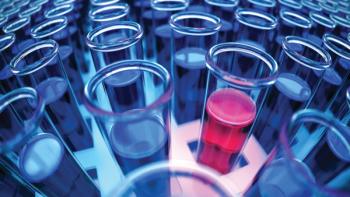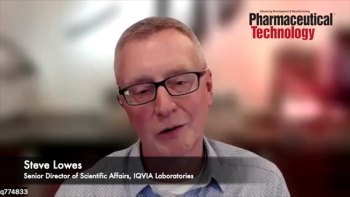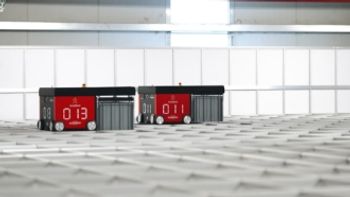
- Pharmaceutical Technology-03-01-2010
- Volume 2010 Supplement
- Issue 1
Industrialized Production of Human iPSC-Derived Cardiomyocytes for Use in Drug Discovery and Toxicity Testing
The authors describe an industrialized process for the manufacture of iPSC-derived human cardiomyocytes. This article is part of a special issue on Bioprocessing and Sterile Manufacturing.
Drug toxicity that emerges either in late-stage clinical trials or following market launch has been a long-term problem for the pharmaceutical industry. The fundamential challenge is that existing preclinical models do not adequately predict the toxicity of new chemical entities. Current cell models are either primary cell cultures derived from non-human animals or immortal cell lines derived from tumors. Because of their non-human nature or neoplastic life history, they are imperfect predictors of drug toxicity in humans. Recent advances in stem-cell technology hold the potential to overcome such limitations.
CELLULAR DYNAMICS INTERNATIONAL
The identification and isolation of stem cells from human embryos opened the promise of using human cells to more efficiently drive drug discovery and toxicity assessments (1). At some point, stem cells may also be used in regenerative medicine to repopulate or even replace diseased tissues and organs. Human embryonic stem cells (ESCs) can differentiate into any of the 200-plus cell types found in the human body.Unfortunately, human ESCs have their drawbacks. Because of their source, ethical controversy has surrounded ESC research since the cells were first isolated in 1998. Furthermore, as they are derived from surplus embryos from in vitro fertilization procedures, their sources and genetic make-up are unknown, thus limiting their utility for investigating potential compound toxicity in targeted human subpopulations.
Induced pluripotent stem cells (iPSCs), on the other hand, possess the advantages of ESCs, avoid the associated ethical implications, and have the intrinsic ability to be a more flexible cell-based research tool. iPSCs are produced from somatic cells that are induced to a pluripotent state by the incorporation of genetic and small-molecule factors that reprogram the somatic cell to a stem cell (2–4). iPSCs have the same pluripotent capabilities of ESCs and the advantages of originating from individuals with identifiable phenotypes and genotypes, thus enabling the use of targeted human subpopulation models early in drug discovery and toxicity screening.
Producing cardiomyocytes from human ESCs and iPSCs using the embryoid body (EB) and directed differentiation methods is well documented (5, 6). The efficiency with which these methods can differentiate ESCs and IPSCs into cardiomyocytes is highly variable, but consistent among both methods is a difficulty in producing highly pure (> 90%) populations of cardiomyocytes. Additional comparisons of cardiomyocyte generation from human ESCs and iPSCs suggest that both starting materials have an equivalent cardiogenic capacity (7), and further molecular and electrophysiological analyses demonstrate that both starting materials produce differentiated cardiomyocytes with phenotypes consistent with atrial, ventricular, and nodal cardiomyocyte subtypes (5, 6).
As described above, human iPSCs have particular advantages over ESCs for drug discovery and toxicity testing when induced to differentiate into a mature cell type. The significant challenge for commercialization of such cells is the ability to consistently produce both starting material iPSCs and the differentiated cells in the quantity, quality, and purity required by the pharmaceutical industry. Here we will describe a process by which we have industrialized the manufacture of iPSC-derived human cardiomyocytes. This process, as currently practiced at Cellular Dynamics International (CDI), is capable of meeting the foreseeable demand for purified iPSC-derived human cardiomyocytes and is scalable by more than two orders of magnitude if necessary without difficulty. We will illustrate the purification process and show that the human cardiomyocytes generated from this process express the same genes, proteins, electrophysiological properties, and responses to cytotoxic substances and ion channel blockers expected of cardiomyocytes.
Manufacture of human iPSCs
iPSCs are developed from human fibroblasts, skin, blood, or other somatic cell types collected from individuals. The purified somatic cells are exposed to reprogramming agents that stimulate de-differentiation into iPSCs. Typically, reprogramming somatic cells is a slow and complicated process to which many investigators have contributed different methodologies (8). Originally, the reprogramming process required genetic modification of the source material with viral vectors that permanently integrate into seemingly random locations within the host DNA. Although the reprogrammed cells exhibited the properties of stem cells, the integrated vectors limited the usefulness of the cells to clinical or drug testing applications because of the perceived potential mutagenic or oncogenic effects of the integrated DNA. New reprogramming methodologies have been developed that largely overcome this barrier (9, 10) so that reprogrammed cells do not have foreign DNA, vector or otherwise, integrated into the genome, thus creating iPSC lines with potential applications in clinical as well as discovery settings.
The key to the mass production of iPSCs is to develop a process that is both scalable and standardizable (see Figure 1). iPSCs, by their nature, are highly proliferative and have the potential to greatly expand their numbers under cell culture conditions. However, they are also very sensitive to manipulation and thus require special treatment and expertise to prevent entry into various non-directed differentiation pathways, events which greatly reduce the ability of the cell population to undergo directed differentiation and reduce the health of the relatively few terminally differentiated cells that are produced.
Figure 1 ALL FIGURES ARE COURTESY OF CELLULAR DYNAMICS INTERNATIONAL (CDI)
To prevent entry of iPSC populations cultured under standard conditions into non-directed differentiation pathways, such differentiated cells must be removed and "weeded out" of the population. This weeding step is subjective, labor-intensive, and highly dependent on the skill and attention of the technician. Therefore, to manufacture the necessary number of iPSCs needed to produce terminally differentiated cells for use by the pharmaceutical industry, we have simplified the process to enable standardization and assembled it into a highly parallel structure.
The major production constraint of cell weeding was eliminated by developing a proprietary culture system that a) used standard single-cell splitting techniques to eliminate the need for periodic weeding, and b) added small molecules to the cell cultures to promote survival and proliferation
Scalability was incorporated into the process by building the cell culture system in a highly parallel nature that enabled the production of billions of iPSCs through the use of CellSTACK culture chambers (Corning, Lowell, MA) rather than standard tissue culture or T-flasks. The large surface area to footprint ratio of the CellSTACK system enabled parallel culturing of iPSCs and resulted in a significant expansion in iPSC production. Currently, this "industrialized" process can generate 100 billion or more iPSCs per month with a small team of manufacturing technicians. Because manufacturing is standardized, production levels can be increased through the addition of additional cell-culture manufacturing lines.
Cardiomyocyte differentiation and purification
Another barrier to the use of iPSC-derived cell types for drug discovery is the production of highly purified terminally differentiated cell types. Random in vitro differentiation, for example through the embryoid body method, is inherently inefficient. Our proprietary directed differentiation method has been able to increase the efficiency of cardiomyocyte differentiation by orders of magnitude (see Figure 2). However, the final cell product requires greater cell purity in order to ensure that an observed experimental response is due to an effect on the target cell type and not other contaminating cells.
Figure 2
CDI has achieved greater cell purity with the following procedure. Prior to iPSC clonal expansion, genes encoding antibiotic resistance and red fluorescent protein (RFP) under control of a pan-cardiac promoter are introduced into the iPSCs through homologous recombination. The use of homologous recombination can target a location on the host chromosome and insert an element of choice, ensuring minimal disruption of endogenous genes. After curation and quality control, the iPSC clone carrying the selectable marker is expanded in multiple CellSTACKs to produce sufficient iPSCs for the cardiomyocyte differentiation. Once expanded, iPSCs are harvested and seeded into spinner flasks with the presence of small molecules and growth factors. Beating aggregates of cardiomyocytes are observed within days after withdrawal of the growth factor cocktail.
Through this method alone, we have been able to routinely achieve cardiomyocyte purities greater than 50% (see Figure 2). As the cardiomyocytes contain the exogenous antibiotic resistance gene while "contaminating" non-cardiomyocytes do not, the population purity is subsequently increased to approximately 100% through exposure to antibiotic. RFP expression confirms the increase in purity. Purified cardiomyocytes are matured in cardiomyocyte maintenance medium prior to cryopreservation. Following re-animation from the cryopreserved state, the high level of cardiomyocyte purity is maintained by culturing the cells in a proprietary medium developed by CDI that eliminates the growth of proliferating (i.e. non-cardiomyocyte) cells and allows the end-user to maintain pure cardiomyocyte cultures in vitro for weeks.
Human iPSC-derived cardiomyocyte characterization
Although purified iPSC-derived cardiomyocytes have the physical appearance of cardiomyocytes and aggregations of the cells exhibit synchronous contractile activity (i.e., the cells beat), we tested the cells' biochemical and electrophysiological properties to determine their utility for drug development and toxicity testing.
Cardiomyocytes manufactured using industrial-scale culture and our cell differentiation process expressed several genes found specifically in cardiomyocytes (see Figure 3). Gene expression of human cardiomyocyte mRNAs was tested using real-time PCR between 0 and 32 days post initiation of differentiation. Gene expression was quantified using Taqman (Applied Biosystems, Carlsbad, CA) gene expression assays for a number of transcription factors, cytoskeletal components, and ion channels. Levels of the stem cell transcription factor Oct-4 decreased during differentiation of iPSC-derived cardiomyocytes, while all cardiomyocyte-specific mRNAs expression levels increased.
Figure 3
The presence of cardiac-specific protein markers was also investigated. iPSC-derived cardiomyocytes were shown to express the cardiomyocyte-specific proteins sarcomeric alpha actinin and troponin I (see Figure 4).
Figure 4
Cardiomyocyte subtypes of the heart have distinctive electrophysiological profiles that can be characterized by, among other items, early depolarization events (Phase 4 depolarization) and the action potential duration. As shown in Figure 5, action potentials produced by individual iPSC-derived cardiomyocytes recapitulate qualities of action potentials of native nodal, atrial, and ventricular cardiomyocytes.
Figure 5
Human iPSC-derived cardiomyocyte pharmacology
iPSC-derived cardiomyocytes should also mimic responses to chemical perturbations seen in normal human cardiomyocytes. Electrophysiological responses of cardiomyocytes were tested against exposure to E-4031, a blocker of the human Ether-�o-go Related Gene (hERG) potassium channels that are primarily expressed in the heart, and to nifedipine, a blocker of the voltage-dependent L-type calcium channel also expressed in the heart. In both cases, the change in shape of the cardiac action potential from single cells recorded with the patch clamp or the shape of the field potential of a population of beating cardiomyocytes recorded with a microelectrode array exhibit the expected prolongation or shortening of the signal as expected based on work with native cells and tissue (see Figure 6).
Figure 6
iPSC-derived cardiomyocytes showed sensitivity to known cardiotoxic compounds (see Figure 7) affecting biochemical processes. Cardiomyocytes exposed to staurosporine for 16 hours showed half maximum effective values (EC50 values) of 575 nM for the live assay and 482 nM for the dead assay. Caspase activity was measured after six hours of drug exposure and demonstrated an EC50 of 585 nM, once again demonstrating the expected responses of native cardiomyocytes.
Figure 7
Conclusion
Cellular Dynamics (Madison, WI) has developed a highly standardized, scalable process to manufacture human iPSC-derived cardiomyocytes. Using this process, the company launched its iCell Cardiomyocytes product line in December 2009, whereby we can produce the hundreds of billions of human cardiomyocytes needed by the pharmaceutical industry for drug-toxicity testing.
These iCell Cardiomyocytes demonstrate molecular and physiological properties and show sensitivity to cardiotoxic compounds expected of human cardiomyocytes. The ability to consistently produce large numbers of high quality and high purity cardiomyocytes offers the pharmaceutical industry a new tool to better predict the cardiotoxicity of new drug candidates. It is expected that these cells will allow pharmaceutical companies to more efficiently select drug candidates while reducing the likelihood that cardiotoxic activity of these compounds will manifest themselves late in development or after regulatory approval and market launch.
Blake Anson* is iCell Cardiomyocyte product manager, Emile Nuwaysir is COO, Brad Swanson is director of cell biology product development, and Wen Bo Wang is director of process sciences, all at Cellular Dynamics International, 525 Science Drive, Madison, WI 53711.
*To whom all correspondence should be addressed.
References
1. J. A. Thomson et al., Science 282 (539), 1061–1062 (1998).
2. K. Takahashi and S. Yamankai, Cell 126, 663–676 (2006).
3. J. Yu et al., Science 318 (5858): 1917–1920 (2007).
4. K. Takahashi et al., Cell 131, 861–872 (2007).
5. J. Q. He et al., Circ. Res. 93, 32–39 (2003).
6. J. Zhang et al., Circ. Res. 104 (4) e30–41 (2009).
7. G. Narazaki et al., Circulation 118 (5),498–506 (2008).
8. N. Maherali and K. Hochedlinger, Cell Stem Cell 3, 595–605 (2008)
9. J. Yu et al., Science 324 (5928): 797–801 (2009).
10. B. Feng et al., Cell Stem Cell, 4, 301–312 (2009).
Articles in this issue
over 15 years ago
Gamma Irradiation in the Pharmaceutical Manufacturing Environmentover 15 years ago
Cost Advantages of Single-Use Technologiesover 15 years ago
Trends in Bioprocessingover 15 years ago
Disposable Technologies for Fill-Finish of Clinical-Trial Materialsover 15 years ago
An Overview of Rapid Microbial-Detection Methodsover 15 years ago
Integrated Microfluidic LC-MSover 15 years ago
The Myth Called "Sterility"over 15 years ago
Surface Plasmon Resonance as an Analytical Tool for Bioprocessingover 15 years ago
A Detail View of Single-Use Equipment OpportunitiesNewsletter
Get the essential updates shaping the future of pharma manufacturing and compliance—subscribe today to Pharmaceutical Technology and never miss a breakthrough.





